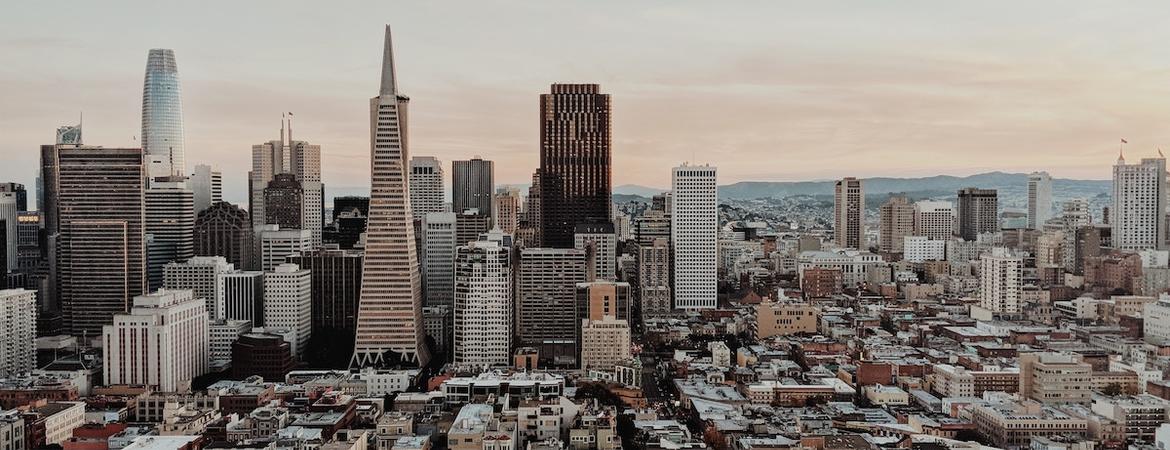
Think of the term “sanctuary city.” Can you remember hearing it much before 2015?
If your answer is no, it’s not surprising. Sanctuary cities largely became a subject of media fixation after the July 2015 shooting of Kathryn Steinle by Jose Inez Garcia Zarate, an undocumented immigrant, in San Francisco, a sanctuary city. President Donald Trump would later make Steinle’s death a centerpiece of his campaign, framing it as evidence of the need for stronger border security.
Since then, public attitudes toward sanctuary cities have grown increasingly polarized, said political scientist Loren Collingwood.
Collingwood, an associate professor at the University of California, Riverside, is a co-author of the new book “Sanctuary Cities: The Politics of Refuge,” published by Oxford University Press.
Released this month, the book traces the history of contemporary sanctuary policies and their effects over the past 40 years. Collingwood and his co-author, Benjamin Gonzalez O’Brien of San Diego State University, also analyze how media coverage and public discourse around sanctuary cities impact how these places are portrayed and viewed today.
Sanctuary cities have become heavily politicized, the researchers write, but their contemporary roots in the U.S. are mostly religious. In the early 1980s, what was known as the Sanctuary Movement began as an effort to protect Central American refugees from federal immigration officers, with faith-based groups offering shelter and service to thousands of people seeking asylum.
Madison, Wisconsin, was the first American city to formally adopt legislation related to the Sanctuary Movement; in June 1983, the Madison city council passed Resolution 39,105, which commended local churches for sheltering Central American refugees. In March 1985, meanwhile, the city council officially declared the city a sanctuary for Central Americans fleeing violence in El Salvador and Guatemala with the passage of Resolution 41,075.
“Since Madison’s resolution in 1985, more than 200 localities nationwide have passed similar laws limiting the participation of local officials in the enforcement of federal immigration law,” Collingwood and Gonzalez O’Brien wrote.
Still, it took the 2016 election to bring sanctuary cities to the forefront of public discourse.
Just five days after taking office, President Trump debuted an executive order that would have withheld federal grants from sanctuary jurisdictions for not complying with federal immigration policy.
The order didn’t survive court challenges, but in response, states began to polarize around the issue, with some passing their own sanctuary legislation. Looking at legislation introduced in 2017 alone, the researchers found approximately 150 sanctuary-related bills proposed by state legislators, 61 of which they categorized as “pro-sanctuary” and 89 as “anti-sanctuary.”
California’s Senate Bill 54, for example, “barred law enforcement from sharing information with federal immigration authorities, or honoring ICE detainers outside of certain crimes, providing information on release dates for individuals taken into custody, or cooperating or assisting in the enforcement of immigration policy in any way,” the researchers noted.
More conservative states, meanwhile, swung in the opposite direction, passing highly restrictive laws like Texas’ Senate Bill 4, which essentially imposed a statewide ban on sanctuary cities.
The researchers found Republican legislators in states with large and growing Latino populations, like Texas, were more likely to introduce anti-sanctuary legislation. Likewise, a state’s support for Trump seemed to predict its opposition to sanctuary cities via anti-sanctuary legislation.
Additional topics explored by Collingwood and Gonzalez O’Brien in “Sanctuary Cities” include:
• Media coverage: The researchers examined more than 1,500 pieces of print and broadcast media, finding coverage of the Sanctuary Movement in the 1980s that inspired sanctuary policies was more sympathetic and echoed themes of religion and morality. Starting in the early 2010s and culminating in Steinle’s 2015 shooting and its aftermath, coverage of sanctuary cities became more crime focused. Sources and coverage overall also became more partisan over time, although print coverage remains more balanced than television.
• Partisan identity: From 2015-17, voters in California and Texas seemed to increasingly identify support for or opposition to sanctuary cities as a partisan issue. Democrats became more supportive of sanctuary cities, and Republicans became less so. These attitudes mimic those toward immigration policy in general, which are also becoming more polarized based on partisan identity.
• Crime: Collingwood and Gonzalez O’Brien looked at crime data in cities that passed sanctuary laws after 9/11 and found no discernible difference in crime rates between sanctuary and nonsanctuary cities. In fact, their research suggests when a state like Texas implements restrictive anti-sanctuary legislation, residents in areas with large concentrations of noncitizens — such as El Paso — become less likely to call 911 and report crime, thus diminishing the legislation’s supposed “crime-fighting” purpose.
• Positive benefits: The researchers identified two major benefits of sanctuary cities: higher rates of Latino voter turnout, and higher numbers of Latinos on city police forces.
Collingwood said as the 2020 presidential election campaign kicks into high gear, it’s likely the debate over sanctuary cities will once again feature prominently.
“While the discourse can get heated, putting anecdote aside, our research traces the development of sanctuary city policy over time, and demonstrates that sanctuary policies do not promote criminal activity but instead help to politically incorporate the immigrant and specifically Latino population within the United States,” he added. “Our findings suggest these policies are more likely to lead to safer and more ‘small-d’ democratic outcomes than the converse.”
Header image by Hardik Pandya via Unsplash




